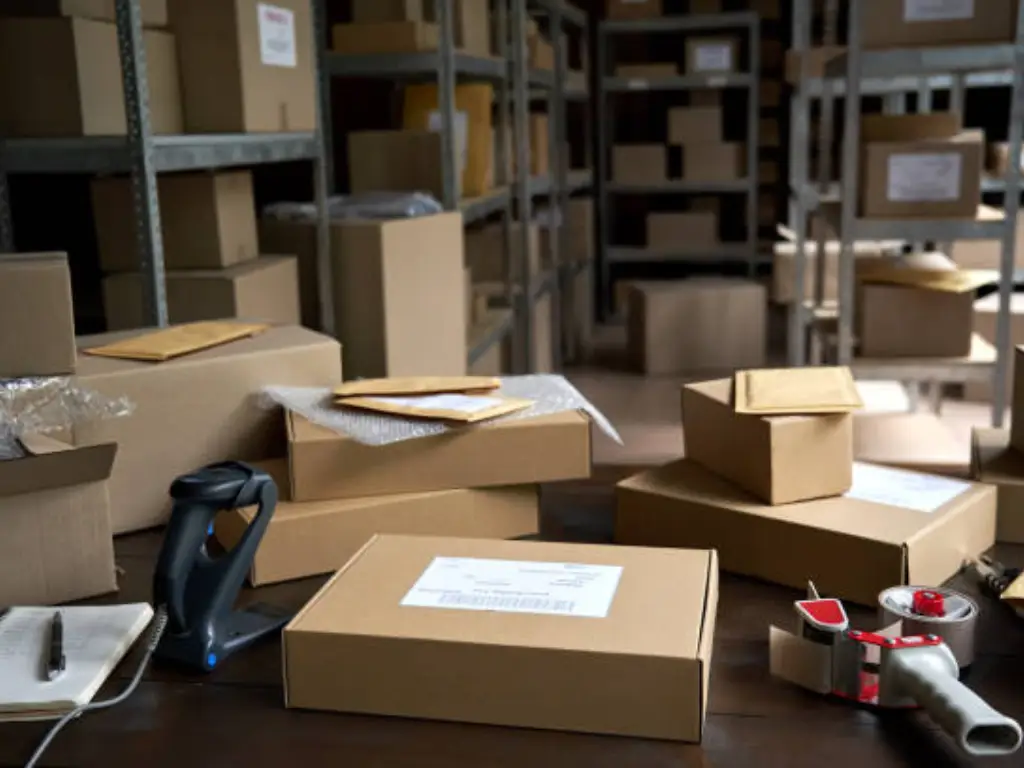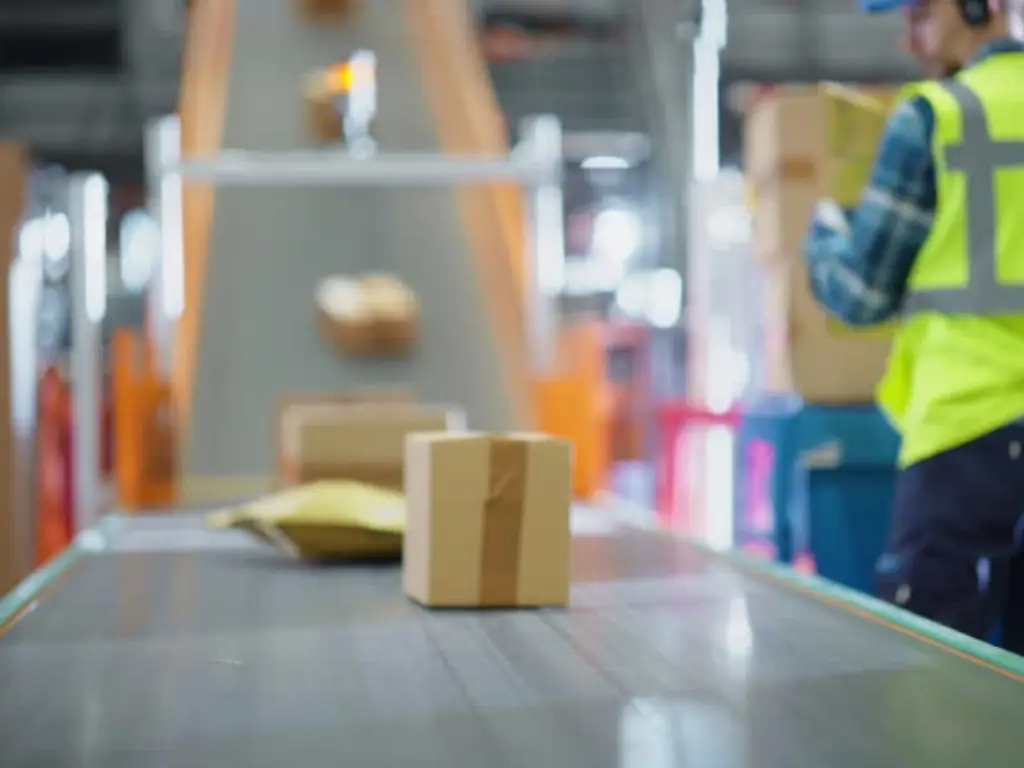Introduction
The online business world is more competitive than ever, so selecting between dropshipping and ecommerce requires more thought than simply operations; now it is a tactical consideration. Regardless of whether you are a novice dipping your toes or an advanced entrepreneur scaling up your ecommerce business model, this decision will influence your profit margins, customer relations, and overall viability. So, what model best suits your business needs in 2025?
We will examine factors like initial cost, investment spending, inventory control, brand creation, growth possibilities, risks, and more to provide you with a comprehensive, side-by-side comparison. This isn’t technical jargon—we will simplify everything and add relevant real-life examples so your choices will be tailored to your needs. So, let us delve further into the specifics that will guide you in making the right selection.
Defining Dropshipping & E-commerce Basics
Before we delve into the nuances, let’s establish a foundational understanding. The world of online selling, at its core, is about connecting products with purchasers through digital channels.
E-commerce Unpacked: More Than Just Online Sales

E-commerce, which stands for electronic commerce, is a term that covers many areas. It describes any business transaction that takes place using electronic means. Consider it the main hall where all kinds of online transactions happen. It covers companies selling to customers (B2C), businesses trading with each other (B2B), and people buying and selling on eBay or similar platforms (C2C). E-commerce covers many different business models, and each one has its way of sourcing, storing, and delivering products. It involves selling any product or service online, no matter where you are. If you sell handmade items at home or ship industrial goods worldwide, as long as the deal is done online, it is considered e-commerce. You need to build a website, draw in customers, and handle payments, no matter how the product is delivered.
Dropshipping Explained: A Unique Fulfillment Model
In the large world of e-commerce, dropshipping plays a particular role. It is not meant to replace e-commerce, but to offer a separate way of fulfilling orders. Dropshipping is a unique, efficient way to deliver products within the wider world of e-commerce. As a dropshipper, you do not need to keep any products on hand. Instead, when a customer buys something from your online store, you get the item from a third-party supplier, who sends it straight to the customer. You help buyers find products and act as a link between them and the sellers, but you never have to handle the goods. The main difference—not having to manage inventory—is what makes dropshipping different from other e-commerce fulfillment options. It is useful for particular business situations, providing certain benefits and also some special points to keep in mind.
Pros & Cons of Dropshipping vs Self-Managed E-commerce
| Feature/Aspect | Dropshipping | Self-Managed E-commerce |
| Inventory Management | No inventory needed | Full control over inventory |
| Quality Control | Low – dependent on supplier | High – managed in-house |
| Branding Capability | Limited | Extensive – full control |
| Customer Experience | Inconsistent | Fully customizable |
| Time Commitment | Lower | Higher |
| Initial Investment | Low | High |
| Profit Margins | 10–30% | 40–70% |
| Risk Level | Low to medium | Medium to high |
| Scalability | Fast but fragile | Slower, more stable |
Let’s talk trade-offs. With dropshipping, the big win is simplicity. No need to manage inventory or a warehouse. You focus on marketing strategies, while your suppliers handle shipping. This makes it an attractive option for small business owners or anyone testing new market segments. But—there’s always a but—you’re sacrificing quality control and customer support flexibility. If your supplier messes up an order, it’s your reputation on the line. You have less control overall, which can limit your ability to deliver consistent customer experiences.
On the flip side, self-managed ecommerce businesses give you the steering wheel and greater control over every touchpoint. Want to build a truly unique brand with unique products? This is your arena. You decide how your products look, how they’re packed, how fast they ship. That means more effort, but also more opportunity to earn trust and create loyal fans. Yes, it’s more complex and resource-intensive, but if your goal is to create lasting customer loyalty and maximize higher profit margins, this model gives you the tools—and much control—to do just that.
Initial Costs: Startup Capital Compared
| Cost Category | Dropshipping (USD) | Self-Managed E-commerce (USD) |
| Platform/Store Setup | $100–$300 | $500–$1,000 |
| Inventory | $0 | $1,000–$5,000+ |
| Packaging & Branding | $0–$100 | $500–$2,000 |
| Marketing/Advertising | $300–$1,000+ | $500–$2,000+ |
| Total Initial Investment | $400–$1,500 | $2,500–$10,000+ |
The dropshipping business model has gained tremendous popularity due to low startup costs—and it’s true. All you need to start a dropshipping store is a few hundred dollars worth of platform tools like Shopify and Oberlo, and even AliExpress plugins. Your most significant cost? Advertising. Without any products to manage stock, your success solely relies on running effective marketing campaigns. So, while dropshipping is cheap to set up, be prepared to spend a lot on Facebook or Google Ads to unlock your first sale with minimal initial investment.
In comparison, self-managed ecommerce comes at a greater upfront cost. You would require a few thousand dollars—and at times, several more—to spend on inventory procurement, custom packaging, and website development. These higher startup costs can be challenging for beginners. But here’s the catch: that investment buys you assets. You own physical products, control the fulfilment processes, and customize the customer journey. When comparing the key differences, self-managed ecommerce brings increased risk, but also higher profit margins and a real foundation for branding. If you’re thinking long-term, this route offers more leverage—assuming you have the cash flow to manage the pressure.
Inventory Management: Stock or No Stock?

These two models are separated by inventory management. In dropshipping, inventory is someone else’s problem. You don’t need a storage unit and there is no risk of unsold stock. The downside? You are at someone else’s mercy when it comes to stock availability, shipping speeds, and quality of the products. That means possible delays, out of stock, and variability in service—and nothing helps as much with customer satisfaction as these dreadful issues.
With self-managed ecommerce, you are in control. You can estimate how much demand there will be, when to restock, and how you will fulfill orders. This level of control translates into less unpleasant surprises, but also more work and burdens. Get it wrong and you face the risk of costly storage space, or worse, lost sales. However, anyone who seeks to take charge of the fulfillment process from start to finish and build trust, will see that properly managing your own inventory is a lucrative challenge.
Profit Margins & Scalability Potential
| Metric | Dropshipping | Self-Managed E-commerce |
| Typical Profit Margin | 10–30% | 40–70% |
| Cost per Unit | Higher | Lower (bulk buying possible) |
| Revenue per Customer | Lower | Higher |
| Long-Term Scalability | Fragile but fast | Slower but stable |
Here comes the challenging aspect—profit margins. In dropshipping, your profit margins are lower, usually between 10-30%. Why? Because someone else is doing the inventory and shipping for you, and you have to pay a premium. To earn a decent income, you need excellent advertising strategies and traffic that converts continuously. It does scale quickly—this part is true—but it’s also fragile. A single unsuccessful ad campaign or a spike in platform fees can gut your margins overnight.
With ecommerce, it’s a different story. Self-managed ecommerce allows you to own the items, also provides control over managing the inventory and therefore sourcing, allowing for higher margins of 40-70%. You need stock and the coarse control of branding significantly lowers the unit cost. Yes, there is slower scaling and increased capital demand, but the growth potential is significant over the long term. Multi-channel sales combined with effective search engine optimization ensures customer feedback loops that build a paid ads independent growth engine.
Control & Branding: Your Business Identity

Should you focus on building a strong self-image or reputation, then commanding control over the branding is essential. In dropshipping, your choices are minimal. Items are the same, packaging is uniform, and customer retention is difficult. You usually depend on other suppliers, and standing out becomes a challenging task. Your dropshipping business model may generate revenue, but being distinctive over time? That’s hard.
You control the story. In self-managed ecommerce, you define the narrative. You define the tone, values, and even design the packaging. Want to include hand-written notes or personalize the box opening experience? You absolutely can. Over time, this strategy does not only improve customer retention—it enhances brand value. With smart content marketing, social media, and a polished self-owned eCommerce, your brand can transform into your greatest asset.
Navigating Risks & Overcoming Challenges
Running an online business always involves some risks—we shouldn’t try to hide that. Dropshipping is a business where you must walk a fine line. If your supplier makes changes to pricing, goes out of business, or delays shipping, you have to deal with unhappy customers. Additionally, product selection becomes a critical aspect; if your supplier’s wide range of products doesn’t align with customer expectations or changes unpredictably, it could hurt your business. You can also face risks on the platform—one mistake and your ad account could be suspended or your payment gateway could freeze. Besides, there is a lot of competition on price. Trying to sell the same products as hundreds of other businesses? Brutal.
There are many challenges that come with managing an ecommerce store on your own. You’ll have to handle money coming in and going out, where to keep your products and any issues in your supply chain. Did you miss your inventory forecast? You’re stuck. A delay in shipping? It’s your responsibility. However, there is good news: you can control these risks. The right systems allow you to address problems and sometimes use them to your advantage. For example, you can promise fast delivery and helpful customer service as part of your brand.
Which Model Is Right for You? (Decision-Making Guide)
To be clear, dropshipping is the way to go if you’re starting with little money, want to sell quickly or are great at advertising. It’s ideal for small business owners who prefer to move fast and don’t want to invest a lot in stock. If you enjoy using social media and data for advertising, this model allows you to be flexible and take little risk.
If your goal is to establish a premium brand and earn more money in the future, it’s best to run your ecommerce business yourself. It takes more effort, but it is also more satisfying. You have complete authority over every step of the customer experience, starting with their first click and ending with receiving the product. If you’re planning to be in the industry for a long time and want to make unique items for loyal customers, this is the right path for you.
(Want to start your own dropshipping business but not sure where to begin? Click here for a step-by-step guide: https://www.speedbeedropship.com/how-to-start-dropshipping/)
Why SpeedBeedropship.com is Your Ideal Dropshipping Supplier
Choosing a dropshipping supplier means more than just looking for those with speed: it requires one who will give you an authentic, reliable branded business. Here at SpeedBeedropship.com, we manage everything from product sourcing to inventory management, quality checks, product quality assurance, and order fulfillment. Your products are stored in our own facilities where we conduct stock readiness, thorough inspections, and item upgrades. This enables you to be competitive without having to manage the physical logistics.
Apart from those, we offer custom services such as private labeling, branded packaging, and product customization which matter for brand growth. Every custom product aligns with your brand’s identity and commitment to quality, supporting your product development goals. Coupled with our vast, ready-to-ship catalog and scalable backend support, you have the flexibility to expand your product range or test new niches without any operational stress. While you focus on marketing and building customer loyalty, SpeedBeeDropship.com manages everything else behind the scenes.
Looking for reliable Shopify dropshipping suppliers? Click here to discover the best options for your store:
https://www.speedbeedropship.com/shopify-dropshipping-suppliers/.
Conclusion
No one approach can surely be deemed better than another when looking at the dropshipping model and ecommerce. Each kind of business model has its advantages and disadvantages which are pertinent to consider. The dropshipping business model is best suited for people looking for low-cost flexible options that are quick to set up. On the other hand, running your own ecommerce business means greater earnings potential, direct oversight, and the ability to build a long-lasting enterprise.
The conclusion you can draw for yourself: Understand your preferences alongside your financial parameters. Your desired outcome, available budget, willingness to manage the business, and risk appetite all come into play as well. With this information at hand, follow the path that helps you accomplish your unique objectives. Regardless of what method you go with, success in ecommerce will require continuous learning, experimentation, market knowledge, and improvement.
FAQ
Is Dropshipping a viable long-term business model?
Yes, it can be a long-term model for dropshipping, but only if value is placed on brand building, creating customer satisfaction, and responsiveness to market changes. If not, competition and policy changes would become a concern.
How do I transition from Dropshipping to Self-Managed E-commerce? A good starting point is to look at your customer data for best-selling products and gradually shift to handling the sourcing and fulfillment yourself. Feedback data will guide improvements for ecommerce fulfillment and quality.
How can I maximize the profit margins in Self-Managed E-commerce?
Best margin increase in Self-Managed E-commerce can be achieved by concentrating on bulk item purchases, building a stronger brand, and nurturing consumer loyalty. Moreover, usage of automation, cross-channel sales, and smart inventory management help cut down costs and refocus profits.
Is it better to use third-party logistics or manage my own warehouse for Self-Managed E-commerce?
The answer depends on your scale. Using a third party for logistics (i.e. FBA) can help with workload, but limit complete control. If you manage your own, flexibility with how things are done increases, but so does operational complexity.



